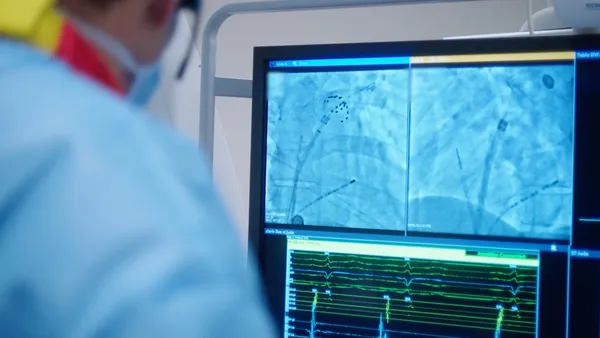Dive Brief:
-
BD has presented six-month clinical data on its Lutonix drug-coated balloon in the treatment of arteries below the knee (BTK), raising hopes that the device can prevent amputations.
-
The long-awaited readout shows Lutonix is as safe as standard balloon angioplasty and offers some evidence of its efficacy.
-
Lutonix outperformed standard angioplasty numerically, but not statistically, when one analysis was applied to the efficacy data, but the divergence between the arms was more pronounced when another technique was used.
Dive Insight:
Lutonix 014 DCB could be an important product for BD and the estimated 3.4 million people in the U.S. with critical limb ischemia (CLI). The restricted flow of blood and oxygen that characterizes CLI can lead to tissue damage and loss of limbs. Surgeons use balloons to try to widen arteries and improve blood flow, but the condition remains associated with poor outcomes.
BD, which acquired Lutonix in its takeover of C.R. Bard, thinks coating angioplasty balloons with a low dose of paclitaxel may yield better results. The product combines the mechanical dilation of standard balloons with the anti-proliferative effects of paclitaxel.
C.R. Bard began enrollment in a 442-patient trial designed to test that idea in 2013, and secured FDA clearance to use six-month data for the primary endpoint in 2016. Now, researchers have presented the six-month data.
The study met its primary safety endpoint, which compared the rate of all-cause death, above-ankle amputation and major reintervention in patients treated with Lutonix or conventional angioplasty. Less than 1% of people in either arm suffered these events in the 30 days after treatment. After six months, around 2% of patients in the Lutonix arm and 5% of people in the standard angioplasty arm had suffered these events.
Those findings put BD in a strong position from a safety perspective. The efficacy situation is a little less clear. When BD applied proportional/binary analysis to the data on the number of limbs saved from amputation and open arteries, Lutonix did not statistically outperform the control arm. The p value came in at 0.0273. However, applying Kaplan Meier analysis to the data resulted in a p value of less than 0.001.
Cardiologists involved in the study were encouraged by the results.
"The six-month clinical data from the Lutonix BTK trial represent the beginning of a paradigm shift in the treatment of patients with critical limb ischemia. The initial results are extremely encouraging and give new hope to patients with CLI,” Jihad Mustapha, an interventional cardiologist at Advanced Cardiac and Vascular Amputation Centers, said in a statement. Mustapha was a principal investigator on the trial and has worked as a consultant for Bard.
BD recently filed for FDA pre-market approval of the device, which has been on the market in Europe since 2013. If the approval and commercialization go to plan, BD thinks the BTK opportunity is worth about $250 million a year. To capture the market, BD may need to deliver positive long-term data against the primary endpoints and other measures such as wound healing rates.











